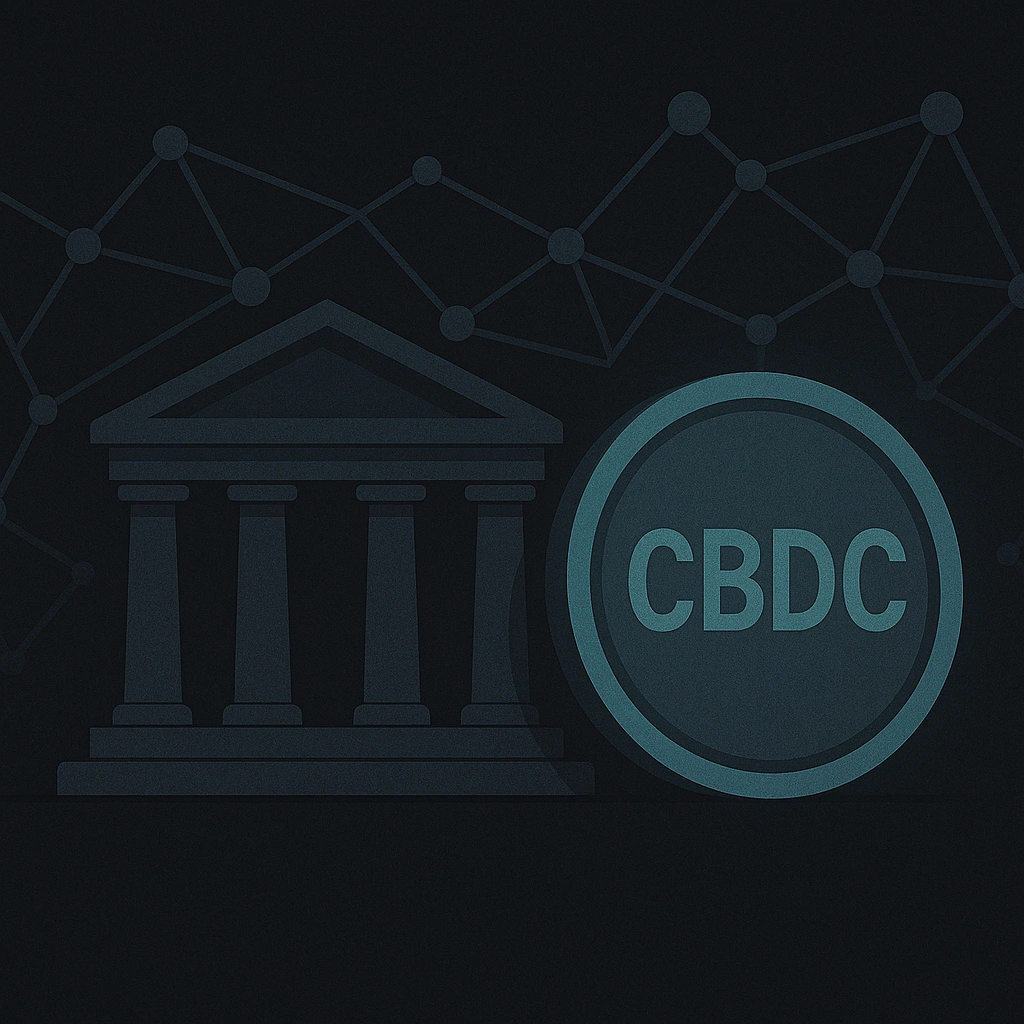In the evolving landscape of digital finance, Central Bank Digital Currencies (CBDCs) have emerged as one of the most transformative ideas. As governments explore digital forms of national currencies, questions arise: what is CBDC and how it works, what challenges lie ahead, and how it compares to private innovations like stablecoins?

CBDCs aim to modernize the monetary system — offering a digital equivalent of cash that is secure, regulated, and universally accessible. Let’s explore their progress, implications, and potential impact on global finance.
What Is CBDC and How It Works?
A CBDC (Central Bank Digital Currency) is a digital form of fiat money issued directly by a central bank. Unlike cryptocurrencies such as Bitcoin, which are decentralized, CBDCs are state-backed and regulated.
How CBDC Works:
- Issuance: The central bank creates digital tokens that represent official currency (e.g., digital euro, digital dollar).
- Distribution: These tokens are distributed via commercial banks or directly to citizens through digital wallets.
- Transactions: Users can pay, transfer, or receive CBDCs just like cash — but digitally.
- Settlement: Transactions are recorded on a secure ledger (blockchain or centralized database), ensuring transparency and efficiency.
The goal is to combine the trust of traditional currency with the speed and efficiency of digital payments.
The Rise of the Digital Euro CBDC
Among the most advanced CBDC initiatives is the digital euro, developed by the European Central Bank (ECB). After years of research and pilot programs, the ECB is preparing to launch the digital euro as a complement — not a replacement — to physical cash.
Objectives of the Digital Euro CBDC:
- Financial Sovereignty: Reduce dependency on foreign payment providers and private stablecoins.
- Payment Efficiency: Enable instant, low-cost transactions within the EU.
- Inclusion: Provide access to digital payments even for the unbanked population.
- Security & Privacy: Balance transparency for regulators with privacy for citizens.
The digital euro CBDC will likely function both online and offline, ensuring accessibility across Europe and strengthening monetary resilience in the digital era.
CBDC vs Stablecoins: Key Differences
As CBDCs gain momentum, they are often compared to stablecoins — privately issued digital assets pegged to fiat currencies. Both aim to provide stable, digital means of exchange, but they differ in structure, trust model, and purpose.
CBDC
Issuer: Central Bank
Backing: National fiat currency
Regulation: Fully regulated
Trust Model: Government-backed
Stablecoins
Issuer: Private companies or protocols
Backing: Fiat, crypto, or mixed reserves
Regulation: Partially regulated or unregulated
Trust Model: Trust in issuer or smart contract
In short:
- CBDCs are public money — secure and sovereign.
- Stablecoins are private money — flexible but potentially risky.
The debate of CBDC vs stablecoins is not about replacement but coexistence: each serves a unique role in the evolving digital economy.
Global Progress: CBDCs Around the World
More than 130 countries are now exploring or piloting CBDCs. Some notable examples include:
- China: The digital yuan (e-CNY) is already in large-scale pilot use, integrated with major payment apps.
- Europe: The digital euro CBDC is entering its legislative phase, with rollout expected later this decade.
- USA: The Federal Reserve continues research into a potential digital dollar, focusing on privacy and interoperability.
- Bahamas: The Sand Dollar was one of the first fully launched CBDCs in 2020.
- Nigeria: The eNaira aims to enhance financial inclusion in Africa.
This global movement shows a clear pattern: nations want to ensure sovereignty over digital money before private alternatives dominate the space.
Benefits of CBDCs
The potential advantages of CBDCs are wide-reaching:
- Financial Inclusion: Accessible digital payments for the unbanked.
- Security & Trust: Backed by the central bank — no credit or default risk.
- Efficiency: Instant payments and reduced cross-border costs.
- Monetary Control: Better implementation of fiscal and monetary policy.
- Innovation Catalyst: Encourages fintech and blockchain integration.
These benefits make CBDCs a vital tool for future-proofing monetary systems.
Challenges and Concerns
However, CBDCs also raise critical challenges that must be addressed before widespread adoption:
- Privacy Risks: How to balance data transparency with user privacy.
- Cybersecurity: Preventing hacking or central system failures.
- Technical Complexity: Developing scalable, secure, and interoperable systems.
- Bank Disintermediation: Risk of users holding CBDCs directly instead of bank deposits.
- Public Trust: Ensuring citizens accept and use CBDCs confidently.
Each nation’s design choices — such as whether to use blockchain or centralized ledgers — will shape how these issues are managed.
The Road Ahead: Adoption and the Future of Money
The transition to digital currencies is not a matter of if, but when. The coming years will define how CBDCs, stablecoins, and cryptocurrencies coexist within a unified digital economy.
The digital euro CBDC could set a global benchmark, influencing how other central banks design their own systems. Meanwhile, private stablecoins will continue to serve in DeFi and global payments, driving innovation at the edge of regulation.
Ultimately, CBDCs represent a bridge — connecting traditional finance to blockchain-based ecosystems while preserving the stability of sovereign money.
Final Thoughts
Understanding what CBDC is and how it works is essential for anyone interested in the future of money. As central banks push forward, the CBDC vs stablecoins conversation will continue to shape digital finance strategies worldwide.
The digital euro CBDC, along with other national initiatives, symbolizes the next major evolution in monetary history — one where trust, technology, and regulation converge to redefine value exchange in the digital age.




